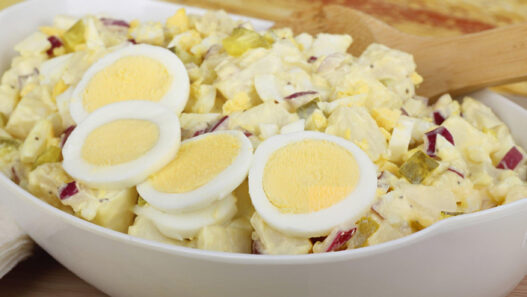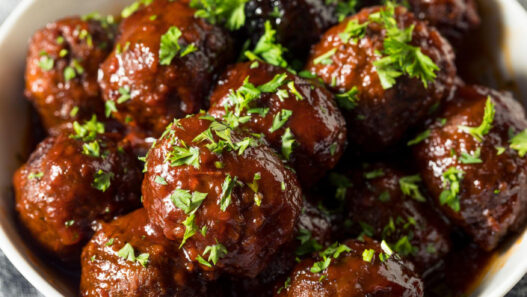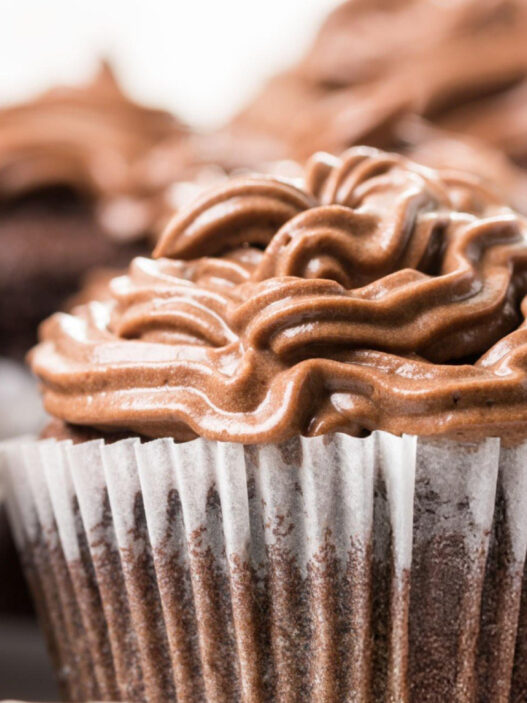Rich with coconut flavor and blessed with a satisfying chew, this cassava coconut cake brings tropical charm to any dessert table. The combination of cassava’s earthy texture and the natural sweetness of coconut makes each bite unforgettable.
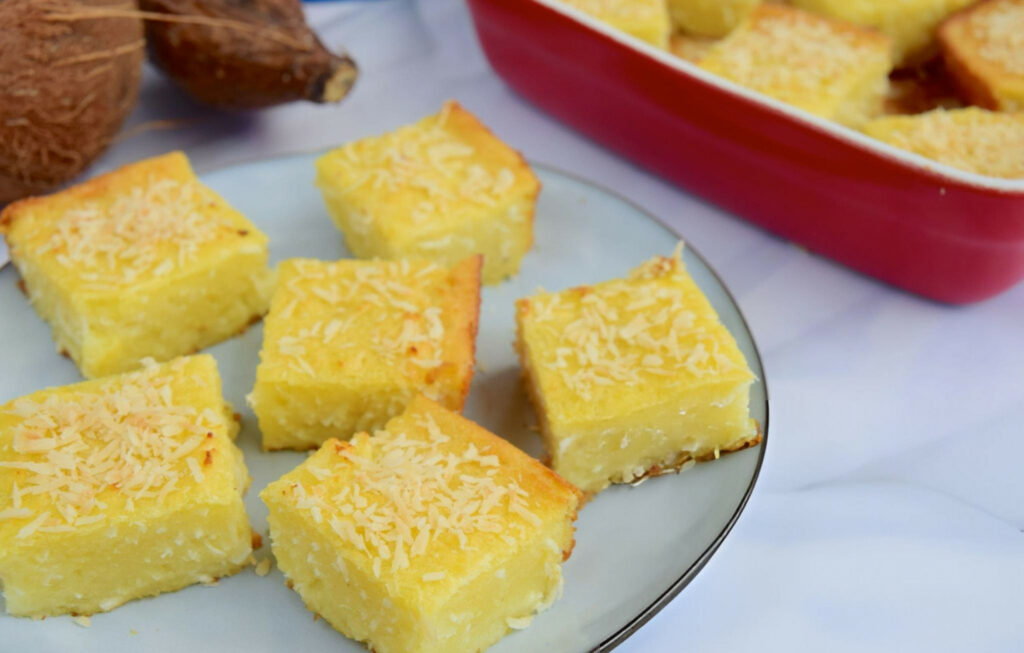
Ingredient Breakdown
Every ingredient works in harmony to deliver the cake’s signature taste and texture.
Cassava, also known as yuca, serves as the earthy base. Its starchiness contributes to the cake’s satisfying chew and slightly dense crumb, setting it apart from conventional cakes.
Sweetened shredded coconut brings a burst of tropical sweetness and a bit of texture throughout the cake. The slight chew of the coconut complements the cassava beautifully.
Parmesan cheese introduces a surprising savory element that balances the overall sweetness. It melts seamlessly into the batter, adding richness without overpowering the coconut.
Sugar is essential for sweetness, rounding out the sharper flavors of the cheese and enhancing the coconut’s natural notes.
Butter lends richness and ensures a tender, moist crumb, while adding depth of flavor.
Milk and coconut milk work together to create a creamy batter. The milk adds body, while the coconut milk reinforces the tropical theme and enhances the cake’s moistness.
Eggs bind the batter, providing structure and lending the cake its luscious, custard-like texture.
Baking powder ensures the batter rises gently, offering just enough lift to keep the cake from being overly dense.
Salt sharpens all the flavors, preventing the cake from tasting flat and helping to bring out the best in each ingredient.
For a creative twist, consider swapping in a touch of lime zest for brightness or a splash of vanilla for extra depth.
Step-by-Step Preparation Guide
Start by preparing the cassava correctly. Peel each root carefully, removing the thick, waxy skin to reveal the bright white flesh underneath, edged with a slight pink ring. Shred the cassava using the medium side of a box grater for the ideal texture—fine enough to blend smoothly, but coarse enough to offer a pleasant bite.
In the bowl of a stand mixer fitted with a paddle attachment, combine the shredded cassava with sugar, salt, and softened butter. Blend on medium speed until the mixture becomes cohesive and creamy.
Add the eggs, milk, coconut milk, Parmesan cheese, and shredded coconut. Continue blending until the batter is smooth and well mixed. This step ensures a uniform distribution of ingredients without overworking the batter.
Sprinkle the baking powder over the mixture and blend briefly to incorporate, ensuring the leavening agent is evenly distributed.
Prepare your baking pan by greasing and flouring it thoroughly. This not only prevents sticking but also promotes even browning along the edges.
Pour the batter into the prepared pan and smooth the top with a spatula. Bake in a preheated 350°F (175°C) oven for about 50 minutes. Check for doneness by inserting a toothpick into the center; it should come out clean or with a few moist crumbs, but no wet batter.
Allow the cake to cool slightly in the pan before slicing. This brief rest helps the cake set and enhances its final texture. Serve warm or at room temperature.
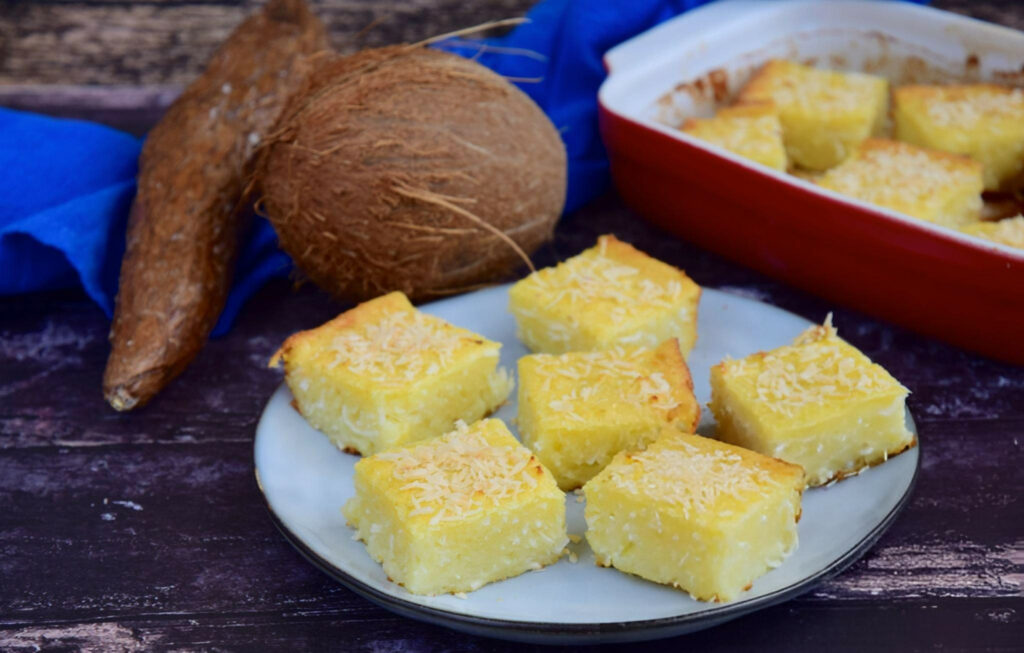
Recipe Tips & Frequently Asked Questions
Choosing fresh cassava:
Select roots that are firm, free of blemishes, and feel heavy for their size.
How to shred cassava for the perfect consistency:
Use the medium side of a box grater for an ideal texture that integrates well into the batter.
Blending for best texture:
Once you add the baking powder, blend just until incorporated to maintain the cake’s tender crumb.
Checking doneness:
Insert a toothpick into the center; it should emerge with moist crumbs but no wet batter for the perfect bake.
Can I use frozen cassava instead of fresh?
Yes, thaw thoroughly and drain any excess moisture before using.
Why is my cassava coconut cake too dense?
Overmixing or insufficient baking time can cause excessive density.
How do I store leftovers, and how long will they keep?
Store in an airtight container at room temperature for up to 2 days or refrigerate for up to 5 days. Reheat gently before serving.
Can this cake be made dairy-free or gluten-free?
Yes. Substitute coconut oil for butter and use dairy-free milk options. Ensure all ingredients, including the Parmesan, are labeled gluten-free.
What to Serve With This Recipe
Pair this cake with a tropical fruit compote—think mango, pineapple, or passion fruit—for an extra burst of island flavor.
For a more luxurious touch, add a dollop of freshly whipped cream or a scoop of creamy vanilla ice cream.
Beverage pairings range from a strong, dark roast coffee to a spiced chai tea or a refreshing glass of chilled coconut water. The cake’s richness is beautifully offset by bold, aromatic drinks.
To serve, dust lightly with powdered sugar for a simple finish or drizzle with a bit of honey for added sweetness.
Creative Variations
Enhance the flavor with a splash of dark rum or a teaspoon of vanilla extract folded into the batter.
Add chopped cashews or almonds for a subtle crunch that complements the chewy texture of the cassava and coconut.
Swap regular sugar for sweetened condensed milk to achieve an even richer, denser cake with a deep caramelized flavor.
Cassava coconut cake captures the essence of tropical comfort in every bite—earthy, sweet, rich, and satisfyingly chewy. Its unique texture and layered flavors bring a refreshing change to the dessert table, offering a slice of sunshine no matter the season. Perfect for sharing, gifting, or savoring one luxurious bite at a time.
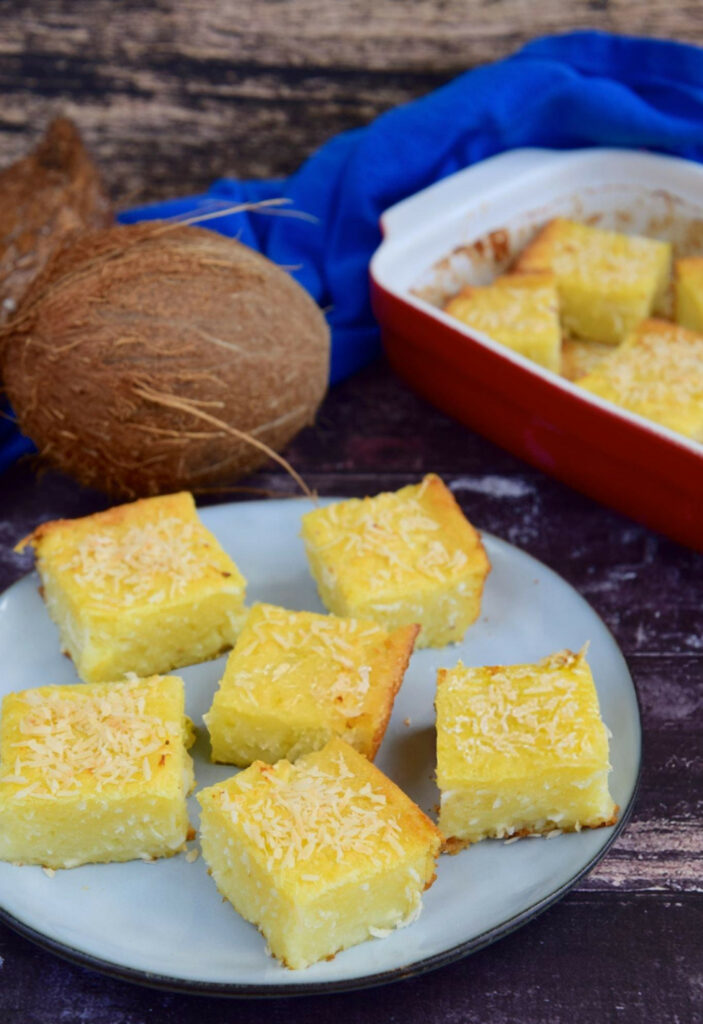
Ingredients
4 cups cassava (yuca), shredded on a medium grater
2 cups sweetened shredded coconut
2 cups shredded Parmesan cheese
1 1/2 cups sugar
2 tablespoons butter
1 cup milk
200 milliliters coconut milk
4 large eggs
1 tablespoon baking powder
1 pinch salt
Instructions
Begin by peeling the cassava roots. Stand each root vertically and carefully remove the thick skin with a sharp knife. The flesh should be bright white with a faint ring of pink just beneath the surface.
Using the medium side of a grater, shred the peeled cassava finely. Measure out 4 cups of shredded cassava and set aside.
In the bowl of a stand mixer fitted with the paddle attachment, combine the shredded cassava, sugar, salt, and softened butter. Blend on medium speed until the mixture is cohesive.
Add the eggs, milk, coconut milk, shredded Parmesan cheese, and sweetened shredded coconut. Continue mixing until the batter is smooth and well incorporated.
Sprinkle in the baking powder and blend once more, ensuring it is evenly distributed throughout the batter.
Grease and flour a baking pan thoroughly. Pour the batter into the prepared pan, smoothing the top with a spatula.
Bake in a preheated oven at 350°F (175°C) for approximately 50 minutes, or until the top is golden and a toothpick inserted into the center comes out clean.
Allow the cake to cool slightly before slicing. Serve warm or at room temperature for a rich, tropical dessert experience.
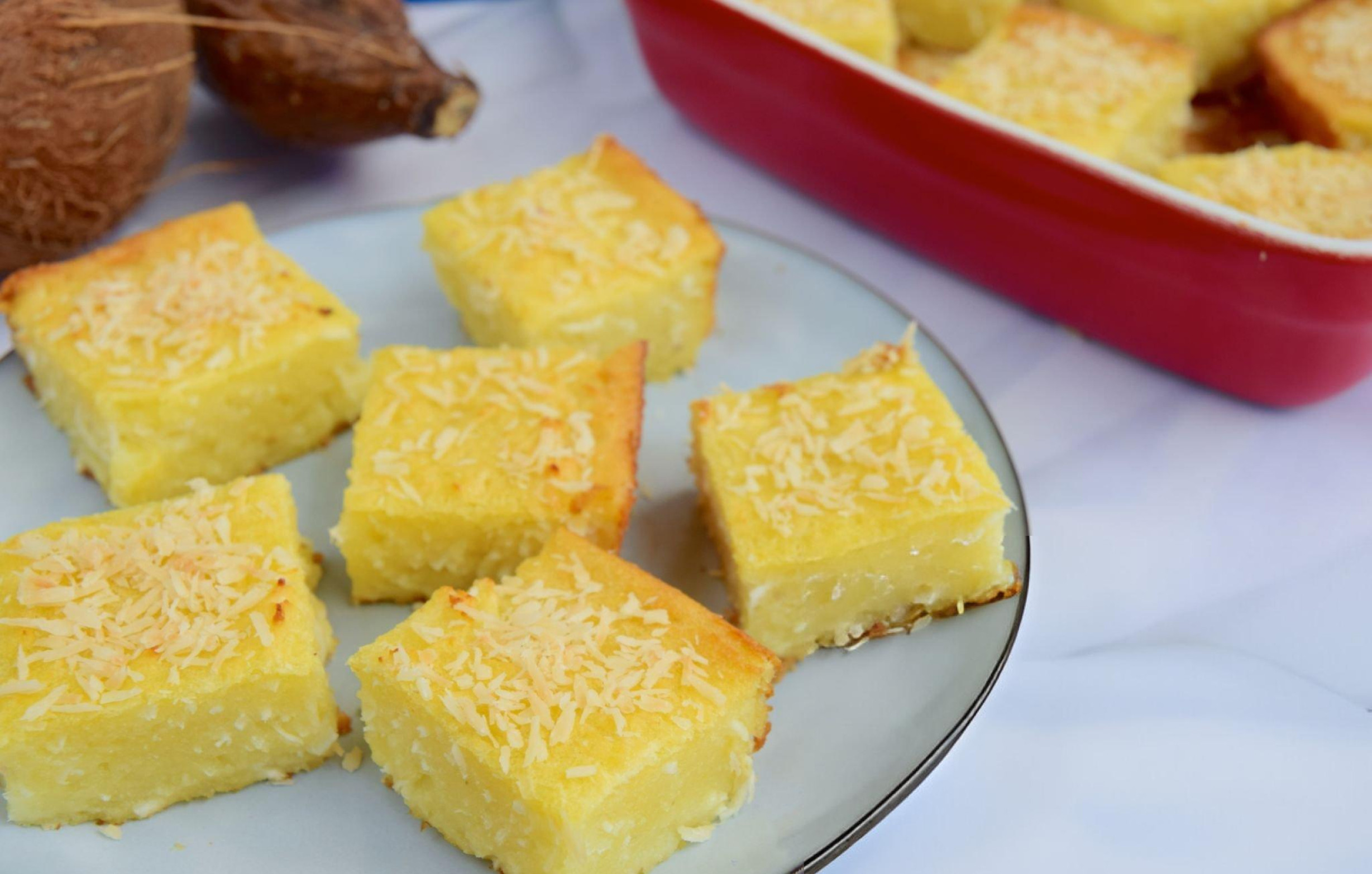
Cassava Coconut Cake Recipe
Ingredients
- 4 cups cassava yuca, shredded on a medium grater
- 2 cups sweetened shredded coconut
- 2 cups shredded Parmesan cheese
- 1 1/2 cups sugar
- 2 tablespoons butter
- 1 cup milk
- 200 milliliters coconut milk
- 4 large eggs
- 1 tablespoon baking powder
- 1 pinch salt
Instructions
- Begin by peeling the cassava roots. Stand each root vertically and carefully remove the thick skin with a sharp knife. The flesh should be bright white with a faint ring of pink just beneath the surface.
- Using the medium side of a grater, shred the peeled cassava finely. Measure out 4 cups of shredded cassava and set aside.
- In the bowl of a stand mixer fitted with the paddle attachment, combine the shredded cassava, sugar, salt, and softened butter. Blend on medium speed until the mixture is cohesive.
- Add the eggs, milk, coconut milk, shredded Parmesan cheese, and sweetened shredded coconut. Continue mixing until the batter is smooth and well incorporated.
- Sprinkle in the baking powder and blend once more, ensuring it is evenly distributed throughout the batter.
- Grease and flour a baking pan thoroughly. Pour the batter into the prepared pan, smoothing the top with a spatula.
- Bake in a preheated oven at 350°F (175°C) for approximately 50 minutes, or until the top is golden and a toothpick inserted into the center comes out clean.
- Allow the cake to cool slightly before slicing. Serve warm or at room temperature for a rich, tropical dessert experience.

